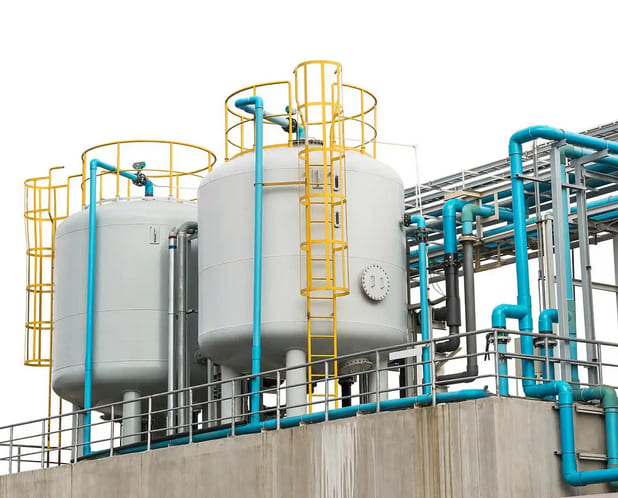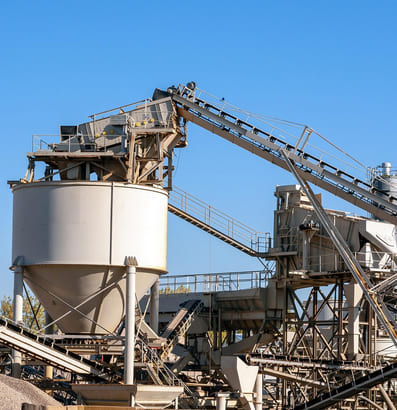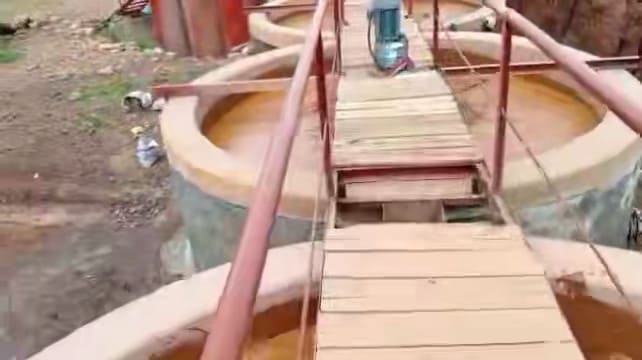Struggling with gold that keeps disappearing? Carbon-containing ores trap precious metals, making their extraction a challenging process. We faced this challenge firsthand—until we cracked the code on pretreatment.
Carbon-containing gold ore requires pretreatment to neutralize “preg-robbing” carbon before extraction. Key steps include ore characterization, carbon removal (roasting/bio-oxidation), and tailored cyanidation. Modern plants combine flotation with fluidized bed roasting, achieving recovery rates of 85% or higher. The process turns stubborn carbonaceous ores into profitable assets.
Carbon isn’t just an impurity—it’s a thief stealing your gold. Let’s explore how to outsmart it at every stage.
What is Carbon-containing Gold Ore?
Ever seen gold ore that refuses to yield its treasure? Carbonaceous ores contain organic carbon that acts like a sponge, absorbing gold during processing.
Carbon-containing gold ore hosts organic carbon (1–5%) that adsorbs dissolved gold from leaching solutions, a phenomenon called “preg-robbing.” These ores often appear as black shale or slate. Their refractory nature demands specialized treatment to break the carbon-gold bond before extraction.
Carbon Types & Their Impact
| Carbon Form | Adsorption Strength | Preferred Treatment |
| Organic Carbon | High | Roasting/Oxidation |
| Graphitic Carbon | Moderate | Blanking Agents (e.g., kerosene) |
| Activated Carbon | Extreme | Avoid cyanide adsorption |
Our plant in Ghana struggled with 3.2% organic carbon ore. Conventional cyanidation recovered only 22% gold. After implementing fluidized bed roasting (650°C, 2 hours), recovery jumped to 89%.
Critical Insight
Always test for:
- Carbon content (loss-on-ignition test)
- Preg-robbing capacity (bottle roll test)
- Gold particle size (microscopy/SEM)
Why Is It So Difficult to Extract Gold From Carbon-containing Gold Ore?
Opening the “black box” of gold mining processing reveals that the core pain point of carbon-bearing gold mines lies in a unique phenomenon: the “carbon-to-gold” effect. Carbonaceous materials in these ores fall into two main categories: solid carbon (such as amorphous carbon and graphite) and organic carbon (such as humic acid). These carbonaceous materials act like “gold thieves,” performing two harmful actions during the gold extraction process:
They preemptively absorb gold ions: When cyanide dissolves the gold in the ore to form complexes, the solid carbon preemptively absorbs these gold complexes, leaving the subsequent activated carbon with “no gold to collect”;
They interfere with adsorption efficiency: The long-bond hydrocarbons in the organic carbon adhere to the activated carbon surface, reducing its ability to adsorb gold, effectively blocking the gold extraction “channel.”
To complicate matters further, the gold particles in carbon-bearing gold mines are typically extremely fine (only 0.002-0.005mm) and often encased in pyrite and gangue minerals. Data shows that when conventional cyanide treatment is used directly, the gold leaching rate is often less than 30% – a carbon-containing gold mine in Gansu even reaches only 21.22%, and most of the gold is “hijacked” by carbon.
Picture pouring cyanide into a sieve—that’s what happens when carbon steals gold mid-process. Traditional methods fail miserably here.
Carbon sabotages extraction by chemically adsorbing gold-cyanide complexes. Even if crushed finely, the gold remains trapped. Pre-treatment must either destroy carbon’s adsorption sites or blind them before leaching begins.

The Steal-and-Hide Mechanism
Chemical Hijack Carbon’s porous structure binds Au(CN)₂⁻ ions strongly than resin or activated carbon used in CIP. Process Disruptions- Cyanide consumption spikes 30–50%
- Gold recovery plummets below 30%
- Tailings retain economic-grade gold
Case Study
A Tanzanian miner wasted $1.2M/month on unrecovered gold until installing:- Stage 1:Ultrafine grinding (P80 ≤25μm)
- Stage 2:Chlorine oxidation (destroying 94% carbon activity)
- Stage 3:Thiosulfate leaching (non-adsorptive lixiviant)
| Parameter | Before Treatment | After Treatment |
| Gold Recovery | 28% | 91% |
| Cyanide Usage | 8 kg/t | 3.2 kg/t |
How Can Carbon Removal And Gold Recovery Be Efficiently?
The processing of carbon-bearing gold ore must follow the logical sequence of “carbon removal pretreatment → core gold extraction → purification and recovery,” with each stage interlinked. The specific process is as follows:
1. Preliminary Preparation: Ore Crushing and Grinding
Crushing: Raw ore (typically 500–1000 mm in size) undergoes primary crushing via jaw crushers to 50–100 mm, followed by secondary crushing with cone crushers to 10–20 mm. Finally, impact crushers reduce the ore to less than 5 mm, easing the grinding process.
Grinding: The finely crushed ore is fed into ball mills. Water is added to form a slurry (concentration approximately 60–70%). Grinding continues until 70–90% of particles meet the -200 mesh size (adjusted based on gold particle size distribution), ensuring full exposure of gold particles while preventing over-grinding that could disperse carbonaceous matter and contaminate the slurry.

2. Pre-treatment Stage: Overcoming “Carbon-Gold Dilemma”
Based on ore carbon content, carbon type, and associated impurities, select corresponding pre-treatment processes. Specific flow is as follows:
- Roasting Pre-treatment (Preferred for High-Carbon Ore)
Ground ore slurry → Dewatering and drying (moisture reduced to <10%) → Feed into roasting furnace (fluidized bed/microwave roasting, 600–800°C) → Oxidative decarbonization (carbon converted to CO₂ and vented, decarbonization rate ≥80%) → Cooling (prevent high-temperature ore from agglomerating upon water contact) → Proceed to subsequent gold extraction stages. - Chemical/Biological Oxidation Pretreatment (Low-carbon, environmentally sensitive ores)
Ground ore slurry → Slurry conditioning (pH adjusted to 2–3, oxidants/microbial agents added) → Oxidation reaction (chemical oxidation 1–3 hours, biological oxidation 10–15 days) → Solid-liquid separation (removal of oxidation products) → Ore slurry enters gold extraction stage. - Combined Pre-treatment (Complex high-carbon, multi-impurity ores)
Ground ore slurry → Carbon removal via flotation (add kerosene/No. 2 oil to float carbon concentrate) → Decarbonized slurry → Roasting/Bio-oxidation (further remove residual carbon) → Proceed to gold extraction stage.
3. Core Gold Extraction Stage: Targeted Separation of Gold
For pretreated ore slurry, select gold extraction processes based on gold particle size and grade. The workflow is as follows:
- Flotation Gold Extraction (Fine-grained Gold, Medium-to-Low Grade Ore)
Pre-treated slurry → Slurry conditioning (add lime to adjust pH to 9–11, add water glass to suppress gangue) → Add gold collector (e.g., butyl xanthate) → Aerated flotation → Produce gold concentrate (grade enhanced 30–50 times) → Send gold concentrate to next purification step. - Cyanide Leaching (Fine-grained gold, high-grade ore)
Pre-treated pulp → Pulp conditioning (add lime to control pH 10–12, add cyanide to dissolve gold) → Leaching reaction (agitate for 4–24 hours, gold forms complexes) → Add activated carbon to adsorb gold → Desorption of activated carbon (using sodium cyanide + sodium hydroxide solution) → Electrolytic deposition (obtain crude gold). - Gravity Separation – Cyanidation Combined Gold Recovery (Ores Containing Both Coarse and Fine Gold)
Pre-treated slurry → Gravity separation (using shaking tables/jigging machines to separate coarse gold, yielding coarse gold concentrate) → Gravity separation tailings → Cyanide leaching (recovering fine gold) → Combining coarse gold concentrate with cyanide-produced coarse gold → Proceeding to purification stage.
4. Purification and Recovery: Obtaining High-Purity Gold
- Refining of Rough Gold
Add rough gold (approximately 80%–90% purity) to nitric acid and aqua regia for dissolution → Filter to remove impurities → Reduce with sodium sulfite → Obtain gold powder (≥99.5% purity). - Finished Product Processing
Dry and cast gold powder → Produce standard gold bars (99.99% purity), or process into gold ingots, gold granules, etc., as required. - Wastewater/Residue Treatment
Wastewater (containing cyanide and heavy metals) generated during gold extraction undergoes alkaline chlorination (to remove cyanide) and heavy metal precipitation before compliant discharge; residues (tailings) are stored in tailings ponds or further processed for recovery of associated minerals (e.g., silver, copper).

What Are The Trends in Processing Carbon-Containing Gold Ore?
With the advancement of China’s “Dual Carbon” policy, the treatment of carbonaceous gold ores is shifting toward high-efficiency, low-consumption, and environmentally friendly technologies:
1. Pressure Oxidation Technology
Under high-pressure conditions, this method effectively oxidizes carbon and sulfides. At a mine in Guizhou, China, adopting this process improved gold recovery rates to 85% while simultaneously removing hazardous arsenic elements.
2. Development of Eco-Friendly Depressants
Innovative natural polymer-based depressants are emerging as alternatives to toxic chemical reagents. These green inhibitors not only prevent carbon from “robbing” gold but also reduce industrial wastewater treatment costs.
These technological advancements align with global sustainability goals while enhancing operational efficiency in gold extraction.
In Summary
Effectively processing carbon-containing gold ore demands a strategic, multi-stage approach that neutralizes carbon’s gold-hijacking properties while maximizing recovery. From meticulous ore characterization and targeted pretreatment (roasting, oxidation, or flotation) to optimized leaching and purification, each step must be tailored to disrupt carbon’s adsorption capacity. Modern solutions like pressure oxidation and eco-friendly depressants are setting new benchmarks—boosting recoveries above 85% while meeting environmental standards. For miners grappling with refractory carbonaceous ores, investing in these advanced methodologies transforms what was once “lost gold” into profitable yields, turning a persistent challenge into a sustainable competitive edge.
